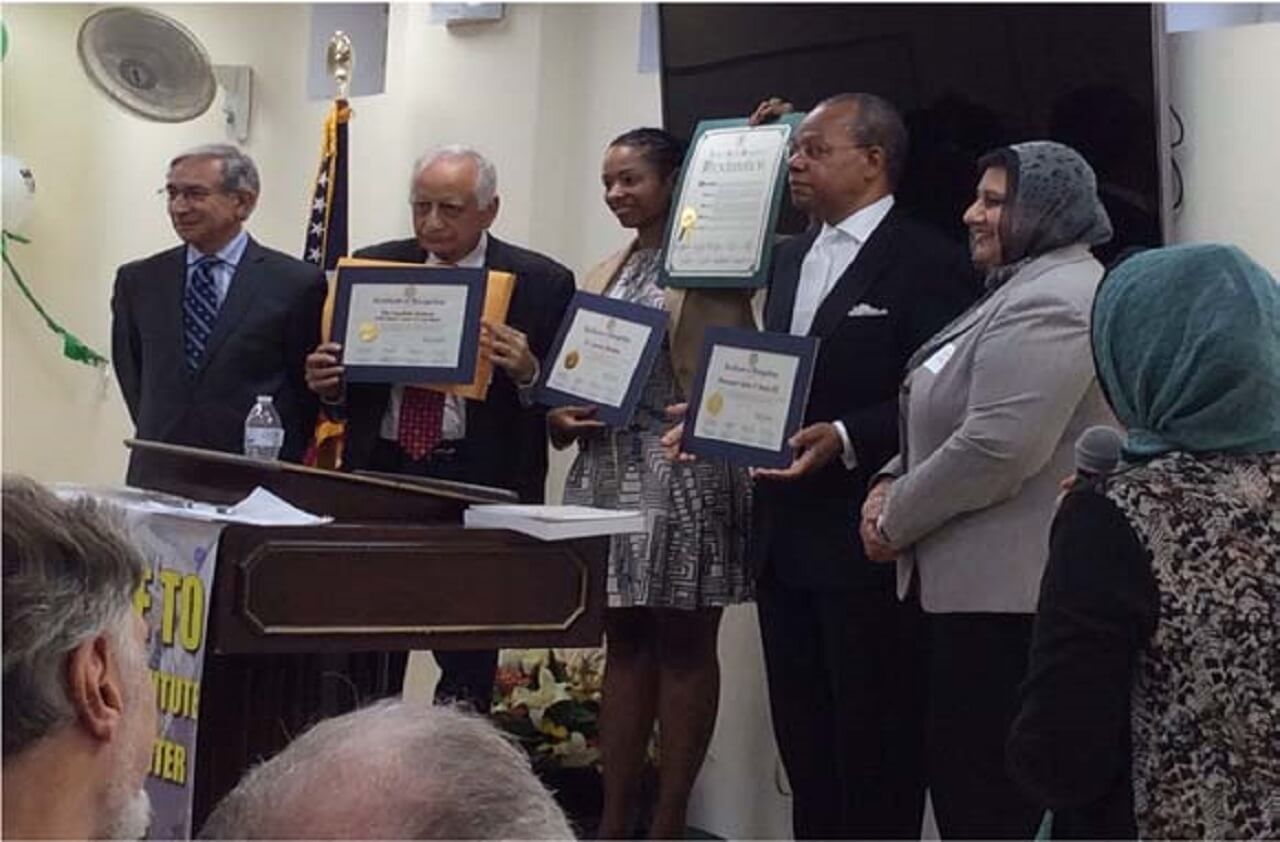In the popular imagination, the enslavement of human beings by other human beings, a wicked stain on the nation’s soul, is limited to the American South. But a recent webinar sponsored by the Interfaith Institute of Long Island focused on the sad reality that slavery happened right here on Long Island.
The basis of the webinar, the institute’s second on issues of racism, was an ambitious research project by journalism students at Stony Brook University, so deeply researched and well written that Newsday published several of their stories. Some also appeared as radio segments on Connecticut-based WSHU-FM.
“In the colonial era, every family of means had a few—maybe one, maybe two, probably no more than three—enslaved people in their household,” said Professor Lynda Day, a historian at Brooklyn College, one of the four panelists. “And that’s the reality of the colonial period on Long Island.”
Day’s book, Making a Way to Freedom, A History of African Americans on Long Island, was a key source for the 17 Stony Brook students. Their professor, Karen Masterson, invited her to meet with the students, and Day was pleasantly surprised by how much they had learned. “The fact that the students already knew about what I had been writing was really very inspiring, heartwarming,” Day said. “It was really a very good experience for a person who’s a teacher, a historian, to go to a group of young people who are already prepped to ask very intelligent, very thoughtful questions about the topic.”
Masterson, a science journalist, had launched the effort after working with students on the Long Island Pine Barrens, an environmental treasure. Her dean invited her to try another equally ambitious project, on any subject she chose. Her first book was The Malaria Project: The U.S. Government’s Secret Mission to Find a Miracle Cure. Work on a new book about public health, which starts in Virginia during the slave era, led to the idea.
Masterson, who now teaches at the University of Richmond, admired the 1619 project in New York Times, on the origins of slavery in America. “But they kind of had their back to Long Island, and they’re looking at the rest of the country,” Masterson said. “They weren’t doing any stories on Long Island. I had already done a little work and understood that we had some really interesting stories to tell from Long Island. So I pitched it to my class.”
Her class bought the idea and began digging, with help from both Day and Zachary R. Dowdy, a Stony Brook journalism professor. He helped bring their work to Newsday, where he then worked as a reporter. “I came in slightly late to the project,” Dowdy said. “They had spoken with Dr. Day at least a couple of times, and she gave them a lot of guidance. So, some of the initial vetting had already been done by the time I jumped on board. I was getting, in some respects, stories that were already in progress, and I was able to begin guiding them source-wise and more conceptually, how is the story going to read, and how much more reporting has to be done.”
One of those students was Brianne Ledda, now a senior and the editor of The Statesman, the campus newspaper. She and the other students drove all over Long Island, including Brookville and Oyster Bay. Her group began at Sylvester Manor, a 17th century plantation on Shelter Island. They spoke with Donnamarie Barnes, the archivist there, who referred Ledda to the Plain Sight project, which had been exploring slavery in the Town of East Hampton. Ledda wrote about Plain Sight, and her work was honored by the Hearst Awards Feature Writing Competition.
“I’ve lived on Long Island my entire life, and I did not know about the history of slavery here,” Ledda said. “So I felt like I was discovering something new every step of the way.” One stunning fact she learned came from a Plain Sight volunteer, Jonathan Kuperschmid. “He said he found an account book that listed the price of cheese as worth more than what they had listed for an enslaved person,” Ledda said. “That was pretty shocking, I think, for everybody who encountered that, to even process that concept. Not only are you putting a price on a person’s life, it’s not even worth more than cheese. That’s crazy.”
What Ledda, the other students, and the professors produced led to a Zoom conversation that drew a larger-than-usual audience. “For the first time we had to close the registration due to the great excitement and demand” said Dr. Faroque Khan, founder of the Interfaith Institute. “Clearly there is great interest in this topic, which we at the Interfaith Institute of Long Island plan to explore further in future programs.”


This event attracted a large gathering, received extensive TV and print media coverage in Newsday, Long Island Press and Islamic Horizon magazine.

Earlier this year when we heard about the visit of Pope Francis we extended an invite for him to formally launch the interfaith institute at ICLI which he was unable to accommodate.

The presentation was very well received. We were able to share a short video from the Oct 25th launch of the interfaith institute of ICLI
See full story
When some countries began to ban the hijab of Muslim women and attack the Islamic dress code, Dr Larycia Hawkin, a Christian and former associate professor...

John Andrew Morrow speaks during interfaith event at the Islamic Center of Long Island in Westbury on Sunday 25, 2015. (Credit : Steven Sunshine)
See full story
Dr. Farooque Ahmed Khan is shown in front of the triple arches that lead into the newly constructed building that will house the Islamic Center of Long Island...
See full story